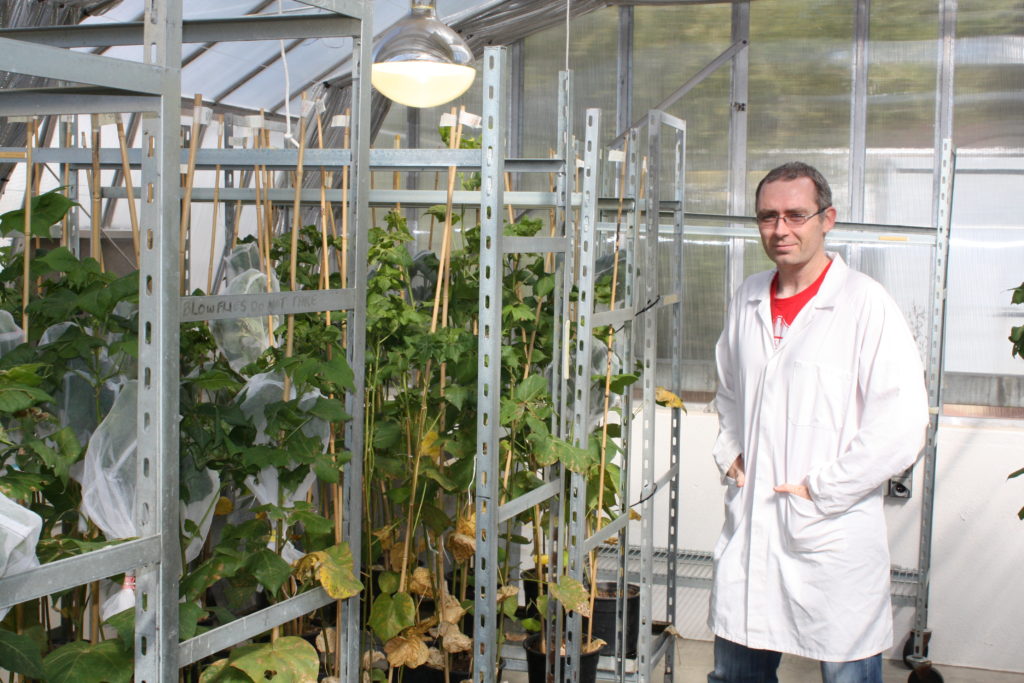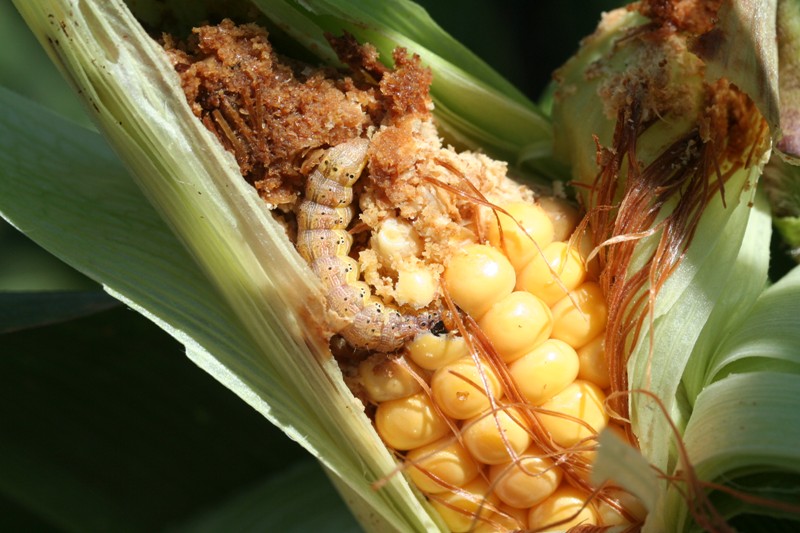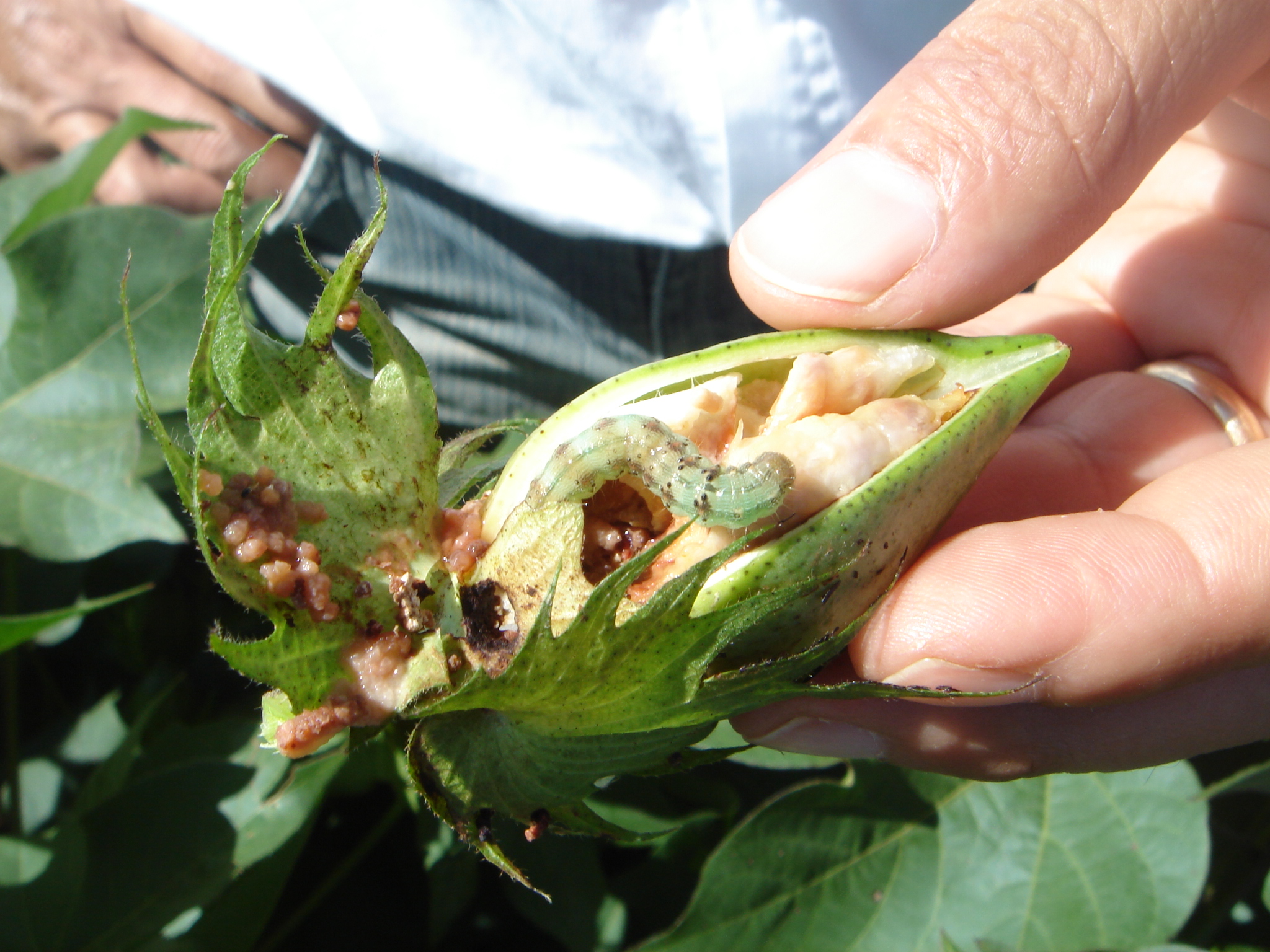Beware the hybrid swarm
The hybridisation research is outlined in a paper published in the Proceedings of the National Academy of Sciences of the USA (PNAS) journal this week. Professor Gregory Sword, chair in cotton entomology at Texas A & M University, believes not only does the paper show clear evidence that hybridization is occurring, but the feared combinations of genes could result in new abilities as a pest. “These findings bolster the idea that this situation should be considered an ‘invasive genome’ problem as much as an invasive species problem,” he says. CSIRO scientist Tom Walsh working with cotton and its major pest Helicoverpa armigera or cotton bollworm. Image: Bill James/CSIRO
CSIRO scientist Tom Walsh working with cotton and its major pest Helicoverpa armigera or cotton bollworm. Image: Bill James/CSIROForewarned is forearmed
To date, the hybridisation has not settled on a consistent genotype and scientists believe the time is now to act on global pest management and discuss the role of genomics in the future of pest management. “As Australia’s national science agency, we are constantly looking for new ways to protect the nation and technology like genome sequencing, is helping to tip the scales in our favour,” Research Director leading CSIRO’s Biosecurity Risk Evaluation and Preparedness Program Dr Paul De Barro says. While a combination of insecticides currently controls these pests well in Australia, it is important to study the pests themselves for sustainable long-term management domestically and world-wide. The cotton bollworm and corn earworm cause US $5 billion in control costs and damage each year across Asia, Europe, Africa, America and Australia.
The cotton bollworm and corn earworm cause US $5 billion in control costs and damage each year across Asia, Europe, Africa, America and Australia.
